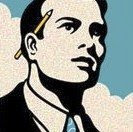July 10, 2012
February 10, 2009
A pioneering psychiatrist and the father of psychoanalysis, Sigmund Freud had a lifelong fascination with the great Renaissance master Leonardo da Vinci. At the turn of the twentieth century, Freud came to America on a lecture tour, appearing in theatres, and explicated his developing and controversial theories on human behavior.
This fact serves as the platform for the play: a lecture by Sigmund Freud on the subject of Leonardo da Vinci.
Freud begins his lecture in conventional ways, introducing the audience to the diverse and miraculous gifts of Leonardo, and reviews his life and times as seen through the prism of his own admiration for the great man. To illustrate the nexus of his central thesis, which is that Leonardo's prolific creative energy was the product of a fiercely suppressed sexuality, Freud tells the audience the story of the painting of the epochal "The Last Supper," a process which, from first entertaining the idea to applying the last brushstroke, lasted more than seven years.
After Freud has provided the audience with the deep background of the story, he retires to his chair at the perimeter of the stage, and the curtain opens on the studio of Leonardo. We meet the young man whose face will become that of Thomas in the painting; we then meet the man who will become the central figure of Jesus; we then meet Leonardo's patron, the Duke of Milano, whose face will become the image for Simon Peter. Freud offers observations, exposition, and commentary between, and sometimes during, these scenes.
The second act opens in an unexpected fashion, as Freud begins to weave his way into the fabric of the story, and we meet the model for the painting's most crucial character, Judas. Surprises arise in startling ways as the play seeks to satirize hoary theatre conventions by simultaneously exploding and exploiting them. The play then drives to a stunning and revelatory climax, leaving all of the characters, including Freud, forever changed.
To read the play or make inquiries, please write to tom@belgia.com
This fact serves as the platform for the play: a lecture by Sigmund Freud on the subject of Leonardo da Vinci.
Freud begins his lecture in conventional ways, introducing the audience to the diverse and miraculous gifts of Leonardo, and reviews his life and times as seen through the prism of his own admiration for the great man. To illustrate the nexus of his central thesis, which is that Leonardo's prolific creative energy was the product of a fiercely suppressed sexuality, Freud tells the audience the story of the painting of the epochal "The Last Supper," a process which, from first entertaining the idea to applying the last brushstroke, lasted more than seven years.
After Freud has provided the audience with the deep background of the story, he retires to his chair at the perimeter of the stage, and the curtain opens on the studio of Leonardo. We meet the young man whose face will become that of Thomas in the painting; we then meet the man who will become the central figure of Jesus; we then meet Leonardo's patron, the Duke of Milano, whose face will become the image for Simon Peter. Freud offers observations, exposition, and commentary between, and sometimes during, these scenes.
The second act opens in an unexpected fashion, as Freud begins to weave his way into the fabric of the story, and we meet the model for the painting's most crucial character, Judas. Surprises arise in startling ways as the play seeks to satirize hoary theatre conventions by simultaneously exploding and exploiting them. The play then drives to a stunning and revelatory climax, leaving all of the characters, including Freud, forever changed.
To read the play or make inquiries, please write to tom@belgia.com
Subscribe to:
Posts (Atom)




